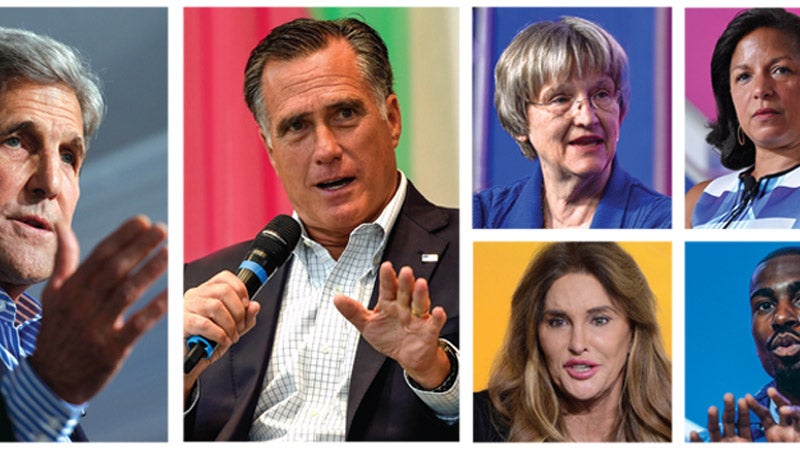In 2016, the election has been a bulldozer, defying political science, conventional wisdom, punditry, predictions, and, every so often, common sense. If politics is a reflection of the id of society, then American society is anxious, afraid, and distrustful of most institutions.
The insurgent candidacy of Senator Bernie Sanders and the nomination of Donald Trump demonstrate the loss of trust in political parties and in their traditional leaders. Both of these politicians are exploiting rifts in the coalitions that form the base of the Republican and Democratic parties. Whether it be class, race, urban and rural, religious, or age divisions, this primary season has highlighted what divides us, not what unites us. All of this shows a wounded system of government and two political parties that are looking toward uncertain futures. Yet the Democratic Party and the GOP are storied institutions in American life. Party organization is a critical pillar of democratic governance. So where do political parties go after 2016?
First, let’s look at the past. For many years, political-party affiliation was a loose set of guidelines, or a spectrum of beliefs. There were liberal Republicans, conservative Democrats, and much in between. Political newcomers and incumbents could run as proudly affiliated with a political party, receive substantial support from the party’s campaign infrastructure, but still retain independence when necessary and important. Each congressional district or state required its elected officials to understand the places in which the community felt strongly about an issue. In Kansas, for example, support for agriculture subsidies was strong across party lines because folks understood what could happen to their way of life if the bottom fell out of commodity markets.
In my own case, while in Congress, I voted with the national Democrats 60 to 70 percent of the time, but I would often vote with Republicans when it was in the interest of my constituents. I wasn’t afraid to cast these votes because I felt they were the right things for Kansans. I didn’t fear party reprisal. Democratic campaign officials understood that I felt the need to take certain positions against the party. That didn’t make me a traitor.
Today, elected officials cross party lines much less frequently, if at all. Certainly voters have become more partisan themselves. But in my judgment, increased partisanship among voters is the effect and not the cause of increased partisanship in political institutions. Campaign consultants, in coordination with the news media and well-funded organizations with extreme views, have used modern communications tools to exploit emotions like fear and anxiety to increase turnout among their supporters. It’s easier to get people to vote if they are afraid of what the other party might do than it is to inspire voter support with a comprehensive plan to, say, make the tax code more progressive or to rein in government spending in the Department of Education.
Political differences have become a leading characteristic in self-sorting by neighborhood. If you don’t know any Republicans, and Democratic elected officials are telling you Republicans are evil, it’s hard to see loyal opposition as anything but the enemy.
In addition, there has been an exponential increase in the amount of campaign funds raised and spent in recent years—especially so-called “dark money” or unreported contributions. Much of that money is spent on vitriolic and negative ads on TV and social media, further discouraging compromise and bipartisanship. I suspect that the 2016 elections, federal and state, will see spending records and public disgust with the political system reach all-time highs.
Perhaps if the United States had a parliamentary system like many European nations, this would be less problematic for governance. But because the US system can only function on compromise, the nation is in its current state of extreme dysfunction. With so few evenly balanced congressional districts, the political base of each party, often representing the ideological extremes of the parties, determines the agenda for the candidates and elected officials, which leads to political gridlock. And gridlock leads to voter disappointment with parties and with governments.
Voters have expressed this frustration by pulling the levers for political outsiders. The extreme positions and rhetoric of Trump have clearly created an opening for profound divisions in the Republican Party. Even Governor Mitt Romney, the GOP’s 2012 candidate, is encouraging Republicans to not vote for Trump. There are some parallels, even if less severe, with Sanders supporters on the Democratic side.
So where does this lead? The most growth in political affiliation is in the numbers of Americans who are self-identified independents. Unless party ideology becomes less rigid and political independence for their members more common, Americans will eventually see political parties as irrelevant. Will they tune out politics completely, disengage and not vote at all?
Whatever the result of the current election, something needs to happen in order for the government to respond to the big issues of this time in US history. Will voters demand that their politicians commit to solving major national problems like fixing the nation’s infrastructure, fighting terrorism sensibly, upgrading energy policy, making progress on long-term fiscal soundness, or making college more affordable? It is in the hands, hearts, and minds of the American people to demand
political change.


